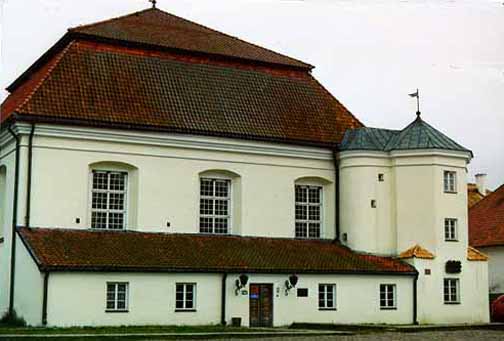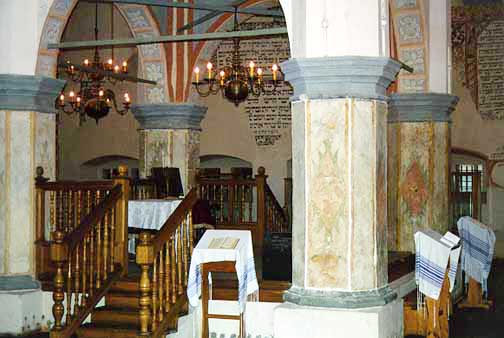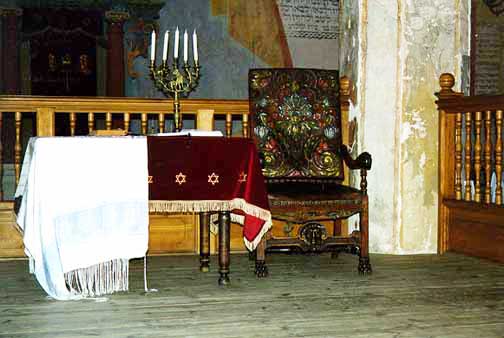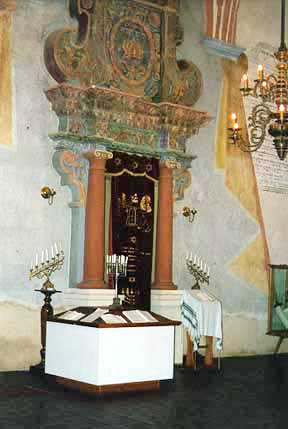Synagogue in Tykocin
 17th Century Baroque
Synagogue in Tykocin
17th Century Baroque
Synagogue in Tykocin
The photograph above shows the exterior
of the Tykocin Synagogue, built in 1642, in the village of Tykocin.
Considered one of the finest Synagogues in Poland, it was built
after the Polish laws, which controlled the construction of Jewish
temples, were revoked and thereafter there were no more regulations
concerning the size or prominence of a Synagogue. Restored in
the 1970ies, it is now a popular tourist attraction, included
on all the Jewish heritage tours. This photo was taken in October
1998 when I toured Poland.
 Interior of 17th century
Synagogue in Tykocin
Interior of 17th century
Synagogue in Tykocin
The interior of the Synagogue in Tykocin
has been preserved as a museum with a few glass display cases
holding such items as prayer shawls along the walls. The caretaker
of the Synagogue and museum is a Polish Catholic. When I went
inside the Synagogue, he turned on a tape recording of cantorial
music so that I could hear, as well as see, what it was like
here on the Sabbath, more than half a century ago.
The photograph above and the two photographs
below are shots of the magnificent interior of the Synagogue.
The photo above shows the bimah (pulpit) in the center of the
Synagogue. The four massive columns, connected by arches, support
the vaulted ceiling. According to my tour guide, this architectural
style is unique to Orthodox Polish Synagogues; the first Synagogue
to use this style was in Lublin, but it was destroyed by the
Nazis. The photo directly below is a closeup of the bimah. The
second photo below shows the Holy Ark on the east wall of the
Synagogue where the sacred Torah is kept.
 Close-up of bimah in
17th century Synagogue in Tykocin
Close-up of bimah in
17th century Synagogue in Tykocin
 The Holy Ark where
the sacred Torah is kept
The Holy Ark where
the sacred Torah is kept
A narrow circular staircase winds up
to a two-room apartment in the tower above the Synagogue where
the rabbi formerly lived, with one room on the first floor above
ground level and another room on the floor above. Both rooms
are very crowded, being no more than 8 by 10 feet in size. One
room has a table set as if for a Seder, the traditional ceremonial
meal served on Passover.
|